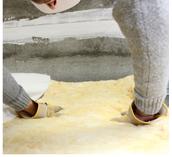Insulating The Crawl Space Under Your Florida Home
You probably don’t often venture into your Florida home’s crawl space. It’s dank, dark and chilly down there, and most homeowners believe it’s simply an unoccupied space that doesn’t affect the rest of the home in the least. However, this notion is incorrect. Before insulating the crawl space, many homeowners experience moisture problems and increased utility bills. Here’s a look at how this seldom considered part of your house is capable of so much harm and how to stop the problems by insulating the crawl space.
Purposes of a crawl space
The crawl space has two distinct purposes. First, it elevates the home off the ground to keep dampness and termites away. Second, it’s able to provide space for plumbing and ductwork with access for technicians to complete maintenance and repairs.
Harm caused by unfinished crawl spaces
- Moisture problems: Crawl spaces are humid and dark, providing the perfect breeding ground for mold to thrive. This mold can eventually make its way up into the living space where it attracts wood-boring insects into your home. These insects can damage your home’s structure and attract other pests such as rodents into the crawl space.
- Increased energy costs: Ventilated crawl spaces, while built to code for the purpose of mitigating moisture problems, can actually cause more damage than they prevent. This could be true of your Florida home because of our climate’s high humidity.
Insulating the crawl space
- Install a vapor barrier: Before insulation can go in, you must first line the crawl space with a durable liner that covers any exposed earth. This prevents wood rot, mold growth and insect swarms.
- Install a drainage system: This helps keep the ground beneath the vapor barrier dry.
- Find out about ventilation: Work with a qualified HVAC contactor to decide whether year-round crawl space ventilation is beneficial for your situation or not.
- Install insulation: The final step is insulating the ceiling and walls of the crawl space to separate it from the exterior and from your home’s living space.
For more information about insulating the crawl space, please contact NisAir Air Conditioning and Heating today. We serve Martin, Palm Beach and Indian River counties.

